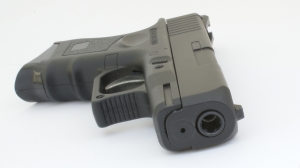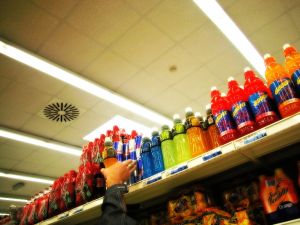 The Baltimore Police Department and the Mayor’s office has released it annual crime report, and the statistics are mixed as to whether 2012 was another step in the right direction. The city’s homicide rate rose for the first time in a few years, and this is a cause for concern from the police and the mayor’s office. In 2011 the city reported 197 murders, which is still a relatively high number considering the overall population. But last year this number actually rose ten percent to 217 murders, thus assuring that Baltimore will still be talked about with the likes of Detroit, Oakland, and St. Louis as one of the most violent cities in America. Although homicides were up it still may not be fair to lump our city in with the usual suspects of violent places. In fact, 2012 crime statistics of other violent crimes and certain property crimes show just the opposite.
The Baltimore Police Department and the Mayor’s office has released it annual crime report, and the statistics are mixed as to whether 2012 was another step in the right direction. The city’s homicide rate rose for the first time in a few years, and this is a cause for concern from the police and the mayor’s office. In 2011 the city reported 197 murders, which is still a relatively high number considering the overall population. But last year this number actually rose ten percent to 217 murders, thus assuring that Baltimore will still be talked about with the likes of Detroit, Oakland, and St. Louis as one of the most violent cities in America. Although homicides were up it still may not be fair to lump our city in with the usual suspects of violent places. In fact, 2012 crime statistics of other violent crimes and certain property crimes show just the opposite.
Police Chief Batts and Mayor Rawlings-Blake were quick to point out that in spite of the homicide spike, the total violent crime rate dropped five percent. Total violent crime includes homicide, as well as other criminal offenses such as robbery, aggravated assault, and rape. Overall there were 400 less of these incidents in 2012 as opposed to 2011. Burglary, arson, and theft numbers were also down by about five percent, and there were a total of 1,800 fewer type I crime victims this past year. Type I crime includes all of the above crimes. Gun crime also increased significantly according to the police statistics. 2012 marked the lowest number of non-fatal shootings in the city since statistics records of these incidents began in the year 2000. There was also a six percent decrease in the combined amount of shootings, carjackings, and armed robberies from 2011 to 2012. Gun arrests and gun seizures did not experience a significant change, as police arrested around 1,100 people for gun crimes and seized over 1,800 illegal firearms.
Continue reading →
 Criminal Defense Lawyer Blog
Criminal Defense Lawyer Blog


 It was like stealing candy from a baby. At least it was for the police officers who recently arrested a Dundalk man for possession of marijuana with intent to distribute. Early in the morning hours employees at a Pennsylvania gas station observed the man placing unidentified candy bars in his pockets. The employees called 911 and law enforcement began searching the immediate area for a man matching the description. The man was spotted within ten minutes by local cops, who detained the Maryland man. After confirming the identification of the candy bar thief, police officers arrested the man for shoplifting. Search incident to arrest revealed two candy bars worth a total of $3.58. It is unclear whether the candy bars were king size, or if the gas station simply charges almost two dollars per bar. Nonetheless, the man would have likely avoided a trip to the local jail had he only been found in possession of candy, but that was not the case.
It was like stealing candy from a baby. At least it was for the police officers who recently arrested a Dundalk man for possession of marijuana with intent to distribute. Early in the morning hours employees at a Pennsylvania gas station observed the man placing unidentified candy bars in his pockets. The employees called 911 and law enforcement began searching the immediate area for a man matching the description. The man was spotted within ten minutes by local cops, who detained the Maryland man. After confirming the identification of the candy bar thief, police officers arrested the man for shoplifting. Search incident to arrest revealed two candy bars worth a total of $3.58. It is unclear whether the candy bars were king size, or if the gas station simply charges almost two dollars per bar. Nonetheless, the man would have likely avoided a trip to the local jail had he only been found in possession of candy, but that was not the case. Snickerdoodle cookies might not have the value of the crown jewels in London, or the gold in Fort Knox, but it is certainly easier to attempt a cookie theft. Or at least that is what two Maryland teenagers had thought before attempting the not so glamorous heist. Baltimore County police recently arrested two sweet toothed teenagers for theft after security guards at the Towson town center observed the teens jumping over the counter at a cookie store. Three Maryland teenagers were apparently involved in the theft, but police were only able to arrest two 16 year old suspects. Police did not reveal exactly how many cookies were stolen by the two teenagers, but the amount appears to be significantly less that the amount of cookies that were stolen at the same store just 48 hours earlier.
Snickerdoodle cookies might not have the value of the crown jewels in London, or the gold in Fort Knox, but it is certainly easier to attempt a cookie theft. Or at least that is what two Maryland teenagers had thought before attempting the not so glamorous heist. Baltimore County police recently arrested two sweet toothed teenagers for theft after security guards at the Towson town center observed the teens jumping over the counter at a cookie store. Three Maryland teenagers were apparently involved in the theft, but police were only able to arrest two 16 year old suspects. Police did not reveal exactly how many cookies were stolen by the two teenagers, but the amount appears to be significantly less that the amount of cookies that were stolen at the same store just 48 hours earlier. Each year during the summer, the Maryland State Police releases its uniform crime report for the state of Maryland. The crime report uses data collected from every police jurisdiction in all 24 Maryland counties, but only factors in reported crimes in the report. The Maryland State Police defines reported crimes as actual incidents reported to police by victims, witnesses, and other sources used by law enforcement. Complaints of crime that law enforcement deem unfounded are not included in the reported crimes data. The annual uniform crime report is by no means a complete study of all crime in Maryland. In fact, the report only includes eight umbrella crimes in two separate categories, which are violent crimes and property crimes. A specific crime that does not fit into one of the umbrella crimes is not included in the report. Thus many of the most common crimes in Maryland such as DUI, drug possession, and drug sale are not included. In sum, the annual report is not a study of how many people are breaking the law in Maryland each year. Rather, the report analyzes the crimes that that have the greatest impact on citizens, and gauges how safe we really are throughout Maryland.
Each year during the summer, the Maryland State Police releases its uniform crime report for the state of Maryland. The crime report uses data collected from every police jurisdiction in all 24 Maryland counties, but only factors in reported crimes in the report. The Maryland State Police defines reported crimes as actual incidents reported to police by victims, witnesses, and other sources used by law enforcement. Complaints of crime that law enforcement deem unfounded are not included in the reported crimes data. The annual uniform crime report is by no means a complete study of all crime in Maryland. In fact, the report only includes eight umbrella crimes in two separate categories, which are violent crimes and property crimes. A specific crime that does not fit into one of the umbrella crimes is not included in the report. Thus many of the most common crimes in Maryland such as DUI, drug possession, and drug sale are not included. In sum, the annual report is not a study of how many people are breaking the law in Maryland each year. Rather, the report analyzes the crimes that that have the greatest impact on citizens, and gauges how safe we really are throughout Maryland. Retail theft is one of fastest growing crimes in the United States, but Maryland and especially Baltimore appear to be suffering the greatest increases in theft crimes. The FBI has estimated that retail theft may cost the U.S. about $30 billion per year, and these losses are often passed on to the consumer in the form of higher priced goods. While many retail theft crimes are carried out by novice shoplifters or misguided juvenile thrill seekers, the major impacts of retail theft are the result of organized and sophisticated theft operations. When we hear the phrase organized crime, our minds immediately take us to classic mobster movies such as the Godfather, Goodfellas, and Casino, but not all organized crime involves high stakes gambling or drug operations. In fact, retail theft has become one of the most common sources of income for organized crime operations, and now Maryland appears to be a new up and comer in the organized retail theft arena.
Retail theft is one of fastest growing crimes in the United States, but Maryland and especially Baltimore appear to be suffering the greatest increases in theft crimes. The FBI has estimated that retail theft may cost the U.S. about $30 billion per year, and these losses are often passed on to the consumer in the form of higher priced goods. While many retail theft crimes are carried out by novice shoplifters or misguided juvenile thrill seekers, the major impacts of retail theft are the result of organized and sophisticated theft operations. When we hear the phrase organized crime, our minds immediately take us to classic mobster movies such as the Godfather, Goodfellas, and Casino, but not all organized crime involves high stakes gambling or drug operations. In fact, retail theft has become one of the most common sources of income for organized crime operations, and now Maryland appears to be a new up and comer in the organized retail theft arena.